Search the Special Collections and Archives Portal
Search Results

Floyd Jenne interview, 1996: transcript
Date
Archival Collection
Description
Jenne discusses his birth in Ogden, Utah in 1915, his early life in Northern Nevada in 1920s, and his later life in Boulder City, Nevada working as a reclamation ranger for the Bureau of Reclamation. Jenne begins the interviews discussing his work as a steel foundry worker and miner in McGill, Nevada, studying forestry, and enlisting in the Civilian Conservation Corps at Utah State University in 1934. Jenne then describes his experiences moving to Boulder City and working as a reclamation ranger. Other topics Jenne covers include providing security for notable Boulder City and Hoover Dam (Boulder Dam) visitors and patrolling the area. Lastly, Jeanne talks about the Boulder City Junior Chamber of Commerce, Boulder City's incorporation, and Boulder City law enforcement.
Text

Transcript of interview with Clark Crocker by Monica Lehman, March 3, 1978
Date
Archival Collection
Description
On March 3, 1978, Monica Lehman interviewed Clark Crocker (born 1920 in Westfield, Massachusetts) about his experiences while living in Nevada. Crocker first talks about his family and educational background before describing his experiences from going to school in both California and Massachusetts. Crocker then describes what he knows about the building of Hoover Dam and later talks about his career as a teacher and school principal. The two also discuss Crocker’s hobbies and volunteer work, including that for the fire department in Pahrump, and they later discuss Crocker’s experiences as both a frogman and navigator for the United States Navy during World War II. The interview concludes with some of Crocker’s thoughts and philosophies on how curriculum should be structured in schools.
Text

Transcript of interview with Eugene Brandise by Mark Mangiaracina, March 3, 1980
Date
Archival Collection
Description
Text
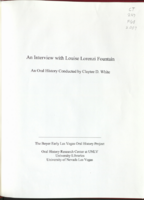
Transcript of interview with Louise Lorenzi Fountain by Claytee D. White, March 30, 2004
Date
Archival Collection
Description
Text
Pueblo Grande de Nevada Manuscript Collection
Identifier
Abstract
The Pueblo Grande de Nevada Manuscript Collection (1924-1983) contains journal articles, photocopies of artifact inventories, reports, correspondence, and field notes related to the Pueblo Grande de Nevada archaeological site located in the Overton Valley of Southern Nevada. The bulk of the materials are related to Mark R. Harrington's archaeological reports, journal articles, and data from sites throughout the Overton and Moapa valleys. The collection also includes materials related to the Boulder Dam Park Museum (Lost City Museum of Archaeology) located in Overton, Nevada, which housed many of the artifacts and photographs from Harrington's archaeological sites.
Archival Collection
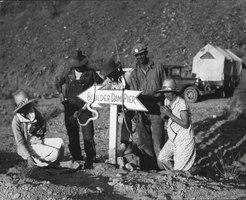
Photograph of people standing at a sign for the Boulder Dam Pier that has rattlesnakes hanging from it, Boulder City, Nevada, April 18, 1931
Date
Archival Collection
Description
Image
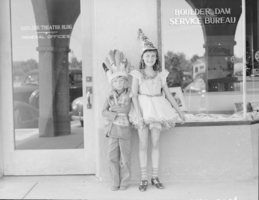
Film transparency showing children in front of Boulder Dam Service Bureau Building, Boulder City, Nevada, circa 1932-1940s
Date
Archival Collection
Description
Image
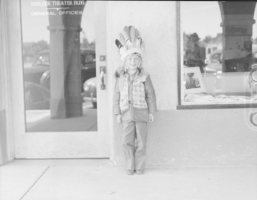
Film transparency of showing a child in front of Boulder Dam Service Bureau Building, Boulder City, Nevada, circa 1932-1940s
Date
Archival Collection
Description
Image
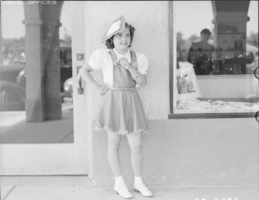
Film transparency showing a girl outside Boulder Dam Service Bureau Building, Boulder City, Nevada, circa 1932-1940s
Date
Archival Collection
Description
Image
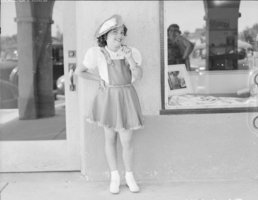
Film transparency showing a girl outside Boulder Dam Service Bureau Building, Boulder City, Nevada, circa 1932-1940s
Date
Archival Collection
Description
Image
